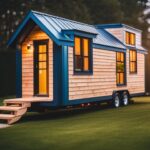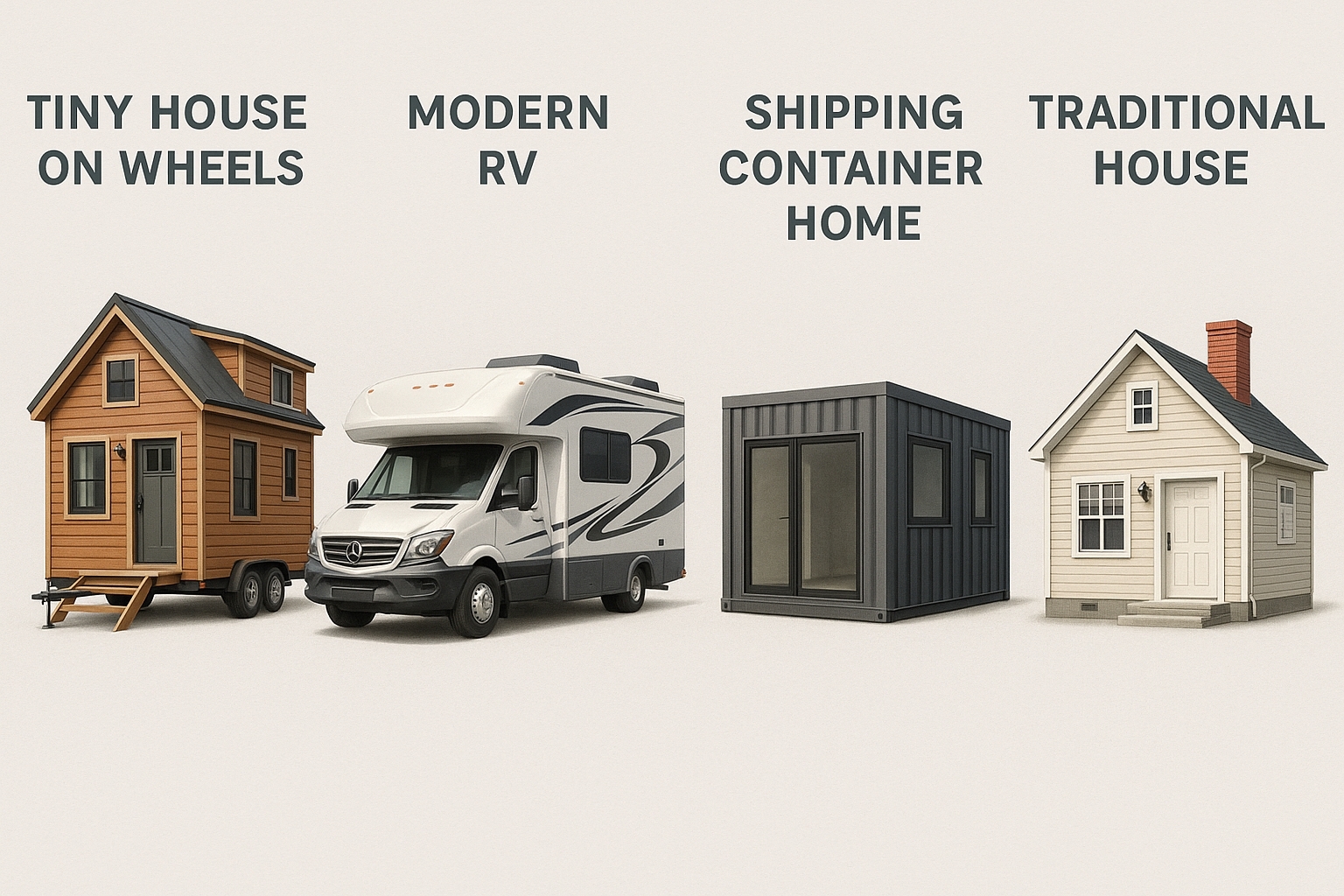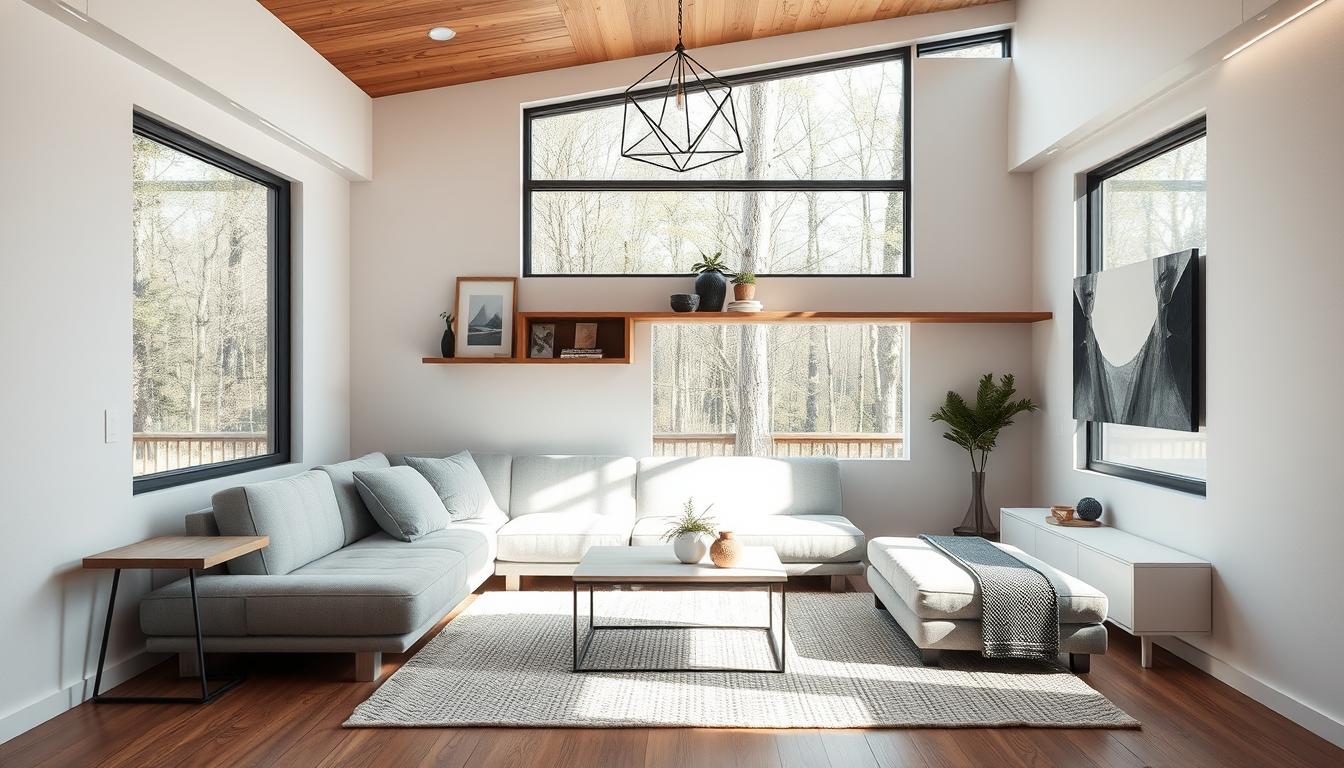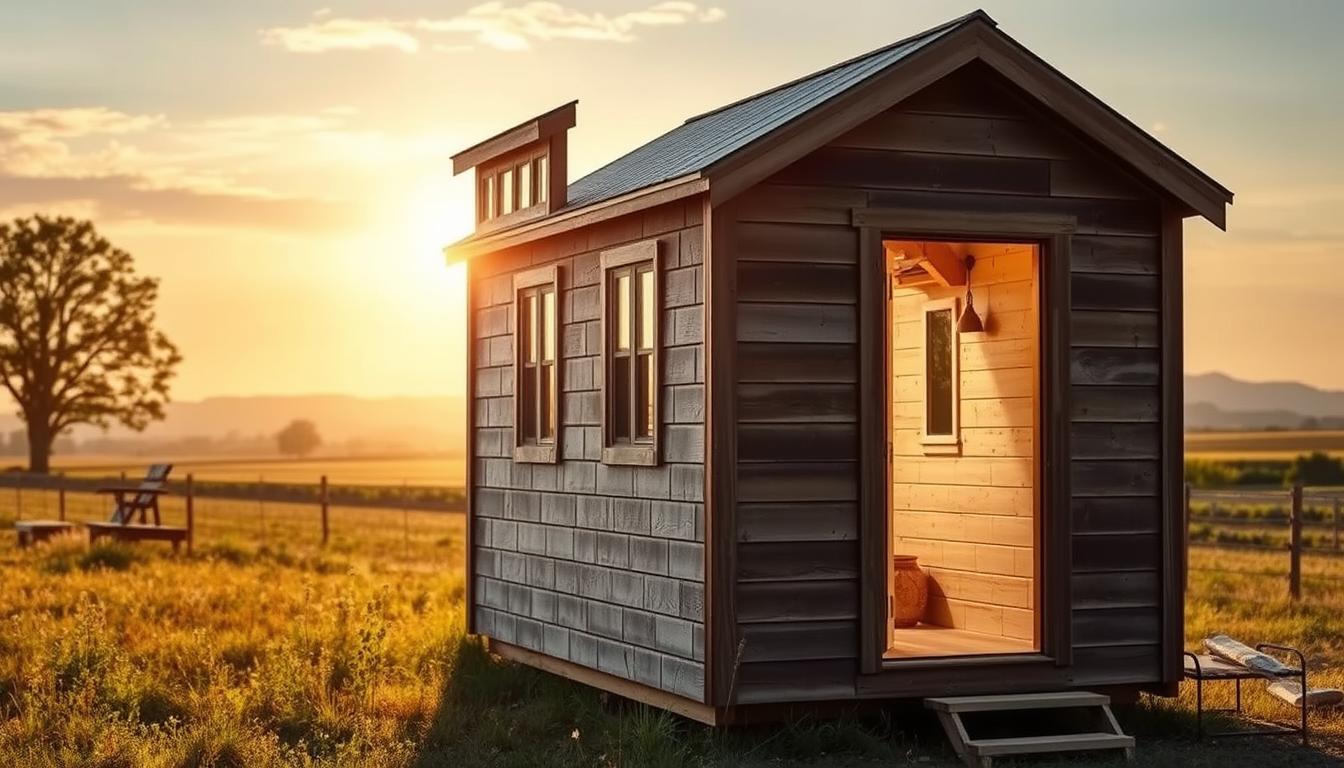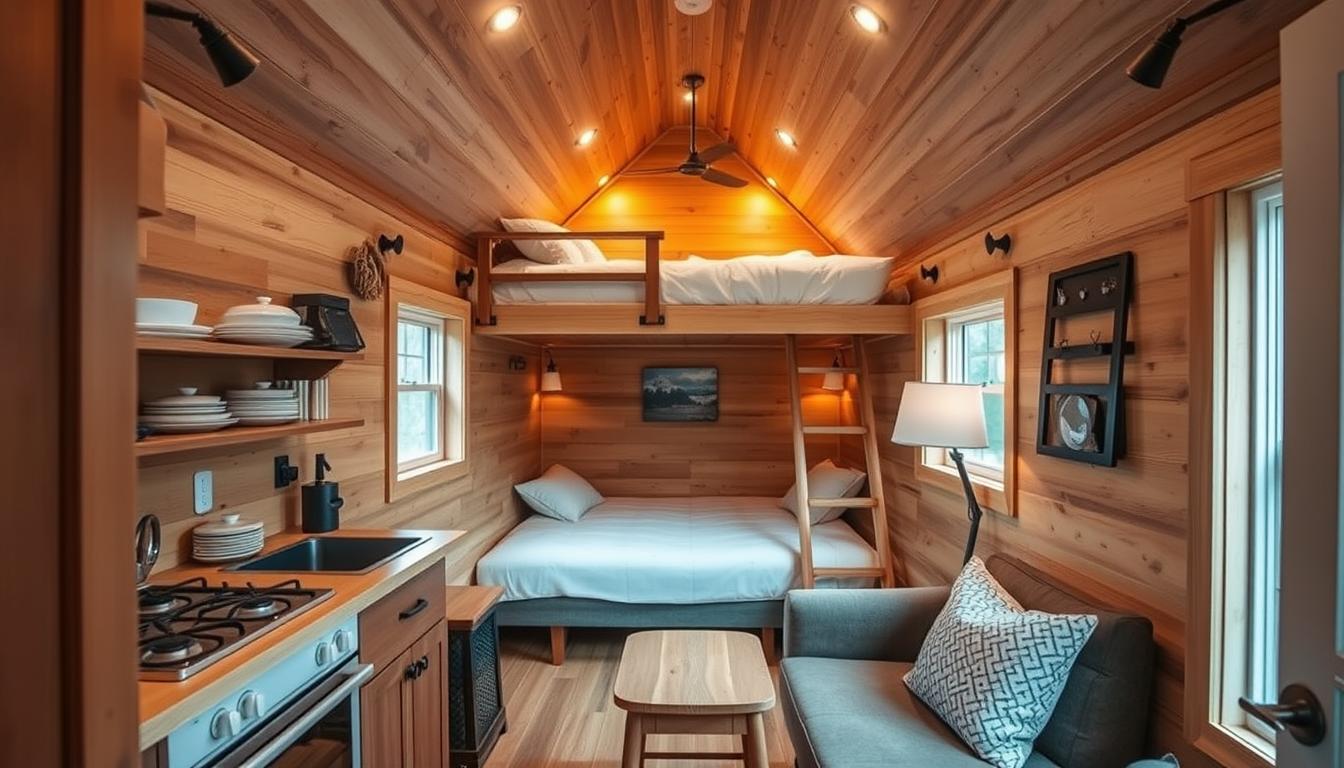Are you interested in downsizing and living a simpler, more sustainable lifestyle? Tiny houses have become increasingly popular in recent years as a way to achieve this lifestyle. In this article, we’ll explore the factors that affect the cost of building a tiny house, financing options, and tips for reducing costs.
What you need to know about the cost of building a tiny house
- Factors that affect the cost of building a tiny house including location, size, materials, and labor costs
- Average cost breakdown for each type of tiny house, including materials, tools, permits, and other costs
- Financing options for tiny house builds, tips for reducing costs, ongoing expenses, and a comparison of tiny house costs to traditional home costs.
Factors Affecting Tiny House Cost
Several factors can impact the cost of building a tiny house, including location, size, materials, labor costs, building codes, and safety standards.
Location
Land prices vary depending on the area, and zoning laws and building codes can affect your ability to build a tiny house. Research local regulations before purchasing land or starting your build.
Size
Generally, the larger the home, the more expensive it will be to build. Find a balance between size and functionality to ensure that your tiny house meets your needs.
Materials
The quality, durability, and sustainability of the materials you use will also affect the cost of your build. Choose high-quality materials that are durable and energy-efficient to reduce long-term costs.
Labor Costs
The cost of labor can vary depending on whether you choose to hire professional builders or go the DIY route. While hiring professionals may be more expensive, it can save you time, ensure that your build meets all necessary regulations, and prevent costly mistakes.
Building Codes and Safety Standards
Building codes and safety standards are critical considerations when building a tiny house. Complying with these regulations can add to the overall cost of the build, but it is essential to ensure the safety and structural integrity of your tiny house.
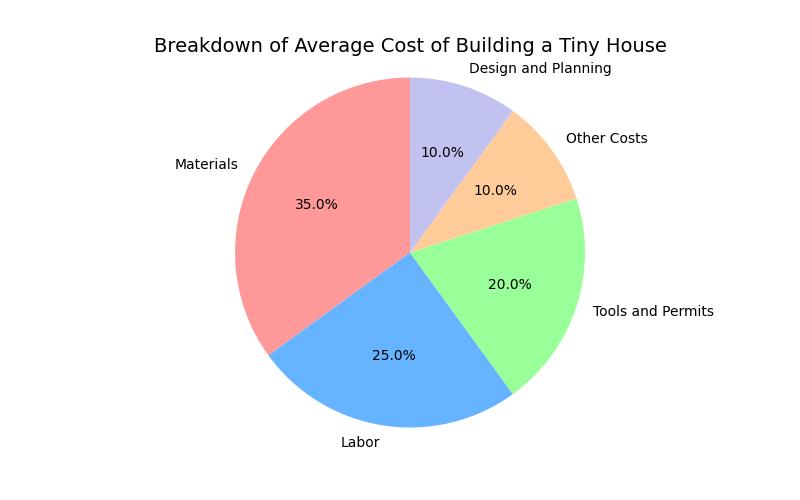
Average Cost Breakdown for a Tiny House Build
The cost of building a tiny house can vary widely depending on the type of home you choose to build and the materials and labor costs in your area.

Types of Tiny Houses
There are three main types of tiny houses: on wheels, on a foundation, and shipping container homes. On average, a tiny house on wheels costs between $20,000 and $80,000, while a tiny house on a foundation can cost between $30,000 and $150,000. Shipping container homes can range from $15,000 to $50,000, depending on the size and features.
Materials
The materials you use for your tiny house can also impact the cost. Some of the most significant expenses include lumber, roofing, windows, doors, plumbing, and electrical. Choose high-quality materials that are durable and energy-efficient to reduce long-term costs.
Tools and Permits
In addition to materials, you’ll also need to budget for tools, permits, and other costs associated with the build. This may include power tools, hand tools, safety equipment, and storage. You’ll also need to obtain building permits, zoning permits, and impact fees, which can vary depending on your location.
Other Costs
Finally, there may be other costs associated with your tiny house build, such as a composting toilet, solar panels, and water tanks. While these features can increase the cost of your build, they can also help reduce ongoing expenses by making your tiny house more sustainable.
Pros and Cons of Building a Tiny House Yourself Vs. Hiring a Professional Builder
Deciding whether to build your tiny house yourself or hire a professional builder is a significant decision that can impact both the cost and quality of your build.
DIY Builds
One of the most significant advantages of a DIY build is the potential cost savings. You can save money on labor costs and materials by doing the work yourself. However, it’s essential to have the necessary skills and knowledge to ensure that your build meets all necessary regulations and safety standards.
Hiring a Professional Builder
Hiring a professional builder can ensure that your tiny house meets all necessary regulations and safety standards. Additionally, it can save you time, reduce the risk of mistakes, and ensure a higher quality build. However, it can also be more expensive than a DIY build.
Which Option is Best for You?
Deciding whether to build your tiny house yourself or hire a professional builder depends on your budget, skills, and preferences. If you have the necessary skills and knowledge, a DIY build can be a cost-effective option. However, if you’re unsure about the building process or want to ensure that your build meets all necessary regulations, hiring a professional builder may be the best option.
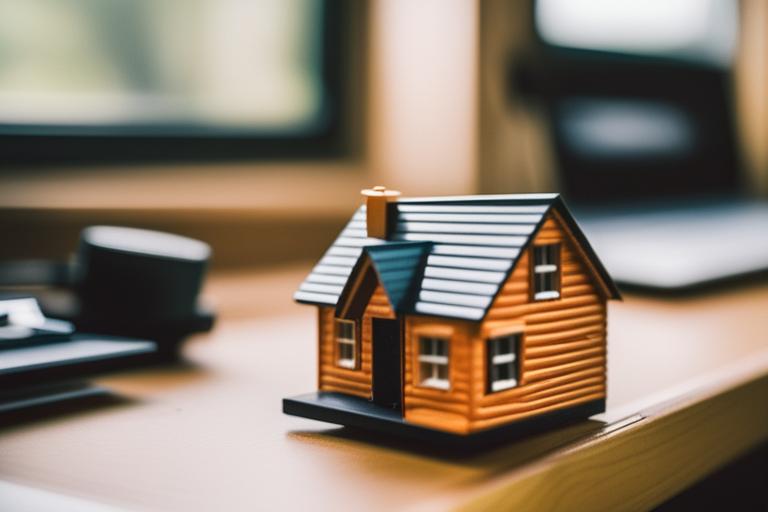
Financing Options for Tiny House Builds
Financing a tiny house build can be challenging, as traditional lenders may be hesitant to provide loans for unconventional homes. However, several financing options are available for those interested in building a tiny house.
Personal Loans
Personal loans are one financing option for tiny house builds. Traditional bank loans, online peer-to-peer lending, and credit cards are all potential sources of financing. Shop around for the best interest rates and terms.
RV Loans
Another option is an RV loan, which is specifically designed for mobile homes. While not all tiny houses qualify as RVs, those on wheels often do. RV loans typically have higher interest rates than traditional home loans, but they can be a good option for those who don’t qualify for other types of financing.
Crowdfunding and Grants
Crowdfunding and grants are also potential sources of financing for tiny house builds. Crowdfunding involves raising money from a large number of people through online platforms such as Kickstarter or GoFundMe. Grants are also available from organizations that support sustainable housing and other related causes.

Tips for Reducing Tiny House Costs
Building a tiny house on a budget requires careful planning and a willingness to compromise on certain features. Here are some tips for reducing your tiny house costs:
Use Reclaimed Materials
Using reclaimed materials can be an excellent way to reduce costs while adding character to your tiny house. Look for salvaged lumber, doors, windows, and other materials in your area.
Design an Efficient Layout
Designing an efficient layout is essential in a tiny house. Every square inch counts, so optimize your space for maximum functionality.
Minimize Square Footage
Minimizing your square footage can also help reduce costs. While a larger tiny house may offer more space, it can also be more expensive to build and maintain.
DIY as Much as Possible
Doing as much of the work yourself as possible can help reduce labor costs. However, it’s essential to have the necessary skills and knowledge to ensure that your build meets all necessary regulations and safety standards.
Use Energy-Efficient Appliances and Systems
Using energy-efficient appliances and systems can help reduce ongoing expenses by reducing your energy consumption. Look for appliances with an Energy Star rating, and consider using solar panels or other renewable energy sources.
Ongoing Costs of Owning a Tiny House
Owning a tiny house comes with ongoing costs, including utilities, maintenance, insurance, water, and sewage.
Utilities
Utilities such as water, electricity, and gas can be a significant ongoing expense. However, by using energy-efficient appliances and systems, you can reduce your energy consumption and lower your utility bills.
Maintenance
Regular maintenance is essential to keep your tiny house in good condition. This may include repairs, upgrades, and cleaning.
Insurance
It’s also important to obtain the necessary insurance coverage for your tiny house. This may include homeowner’s insurance, RV insurance, and liability insurance.
Water and Sewage
Water and sewage costs are other ongoing expenses. If your tiny house is connected to a municipal water system, you will pay a monthly water bill. If you are off-grid, you may need to haul water or collect rainwater. Sewage costs can be minimized by using a composting toilet or connecting to a municipal sewage system.
Other Costs
Finally, there may be other costs associated with tiny house living, such as parking fees and storage fees. Make sure to budget for these expenses when planning your tiny house lifestyle.
Real-life Example of a DIY Tiny House Build
When Sarah and her partner decided to build a tiny house, they knew they wanted to keep costs as low as possible. They were both handy with tools and had some previous construction experience, so they decided to take on the project themselves.
They purchased a used trailer for $4,000 and spent about $10,000 on building materials, including lumber, roofing, windows, doors, plumbing, and electrical. They opted for a composting toilet and solar panels for their power needs, which cost an additional $2,000.
Sarah and her partner spent about six months building their tiny house in their spare time, and estimated that they spent about $500 on tools and safety equipment.
Overall, their DIY build cost them around $16,500, which is significantly less than the average cost of a professionally-built tiny house. Sarah and her partner are thrilled with their new home and the money they saved by building it themselves.
Sarah advises anyone considering a DIY tiny house build to do plenty of research beforehand and to be realistic about their skills and abilities. She also recommends involving friends and family members in the project, as it can be a fun and collaborative experience.
Comparison of Tiny House Costs to Traditional Home Costs
Compared to traditional homes, tiny houses can be significantly less expensive to build and maintain. The average home price in the US is around $200,000, while a tiny house can be built for as little as $15,000. Additionally, monthly mortgage payments on a traditional home can be much higher than the ongoing expenses of a tiny house.
Real-life Examples of Tiny House Costs
To get a better idea of the costs associated with building a tiny house, here are some real-life examples:
Case Studies
- John and Fin’s Tiny House: Built for $25,000 using mostly reclaimed materials.
- The Tiny Project: Built for $30,000 using high-quality, sustainable materials.
- The Tiny Tack House: Built for $20,000 using mostly new materials.
Interviews with Tiny House Owners
- Interview with Macy Miller: Built a tiny house for $11,416 using mostly reclaimed materials.
- Interview with Dee Williams: Built a tiny house for $10,000 using mostly salvaged materials.
Lessons Learned from Successful Tiny House Projects
- The Tiny Life: A blog about tiny house living and building.
- The Tiny House Blog: A resource for tiny house enthusiasts.
Conclusion and Final Thoughts on the Affordability of Tiny Houses
Building a tiny house can be an affordable way to downsize and live a more sustainable lifestyle. By carefully considering the factors that affect the cost of your build, choosing the right financing option, and following cost-saving tips, you can build a tiny house that fits your budget and lifestyle. If you’re interested in downsizing and building a tiny house, check out the internal links throughout the article for more information.
Questions & Answers
Question: What is the average cost of a tiny house?
Answer: The average cost of a tiny house is around $30,000-$60,000.
Question: How can I save money on building a tiny house?
Answer: You can save money on building a tiny house by using reclaimed materials.
Question: Who can build a tiny house?
Answer: Anyone can build a tiny house, but it’s best to hire a professional builder for safety and quality assurance.
Question: What factors affect the cost of a tiny house?
Answer: Factors that affect the cost of a tiny house include size, materials, location and customization.
Question: How long does it take to build a tiny house?
Answer: It takes around 2-6 months to build a tiny house, depending on the complexity and size of the project.
Question: But aren’t tiny houses too small to live in comfortably?
Answer: Tiny houses are designed to be efficient and comfortable, and many people find them to be a great alternative to traditional homes.
The author of this article is a licensed contractor and tiny house builder with over 10 years of experience in the industry. They have personally built and designed several tiny homes for clients across the country, from off-grid cabins to luxury tiny houses on foundations. Their expertise in building and designing tiny homes has been featured in various publications, including Tiny House Magazine and Dwell.
In addition to their hands-on experience, the author has conducted extensive research on the cost factors that affect building a tiny house. They have consulted with other builders, materials suppliers, and tiny house owners to gather insights on the most cost-effective ways to build a tiny house without sacrificing quality or safety.
The author’s knowledge on financing options for tiny houses comes from their experience working with clients to secure financing through personal loans, RV loans, and crowdfunding campaigns. They have also advised clients on how to reduce ongoing costs by using energy-efficient appliances and systems, as well as designing an efficient layout to maximize space.
Overall, the author’s experience and research provide a comprehensive understanding of the factors that affect the cost of building a tiny house and how to make it more affordable.
